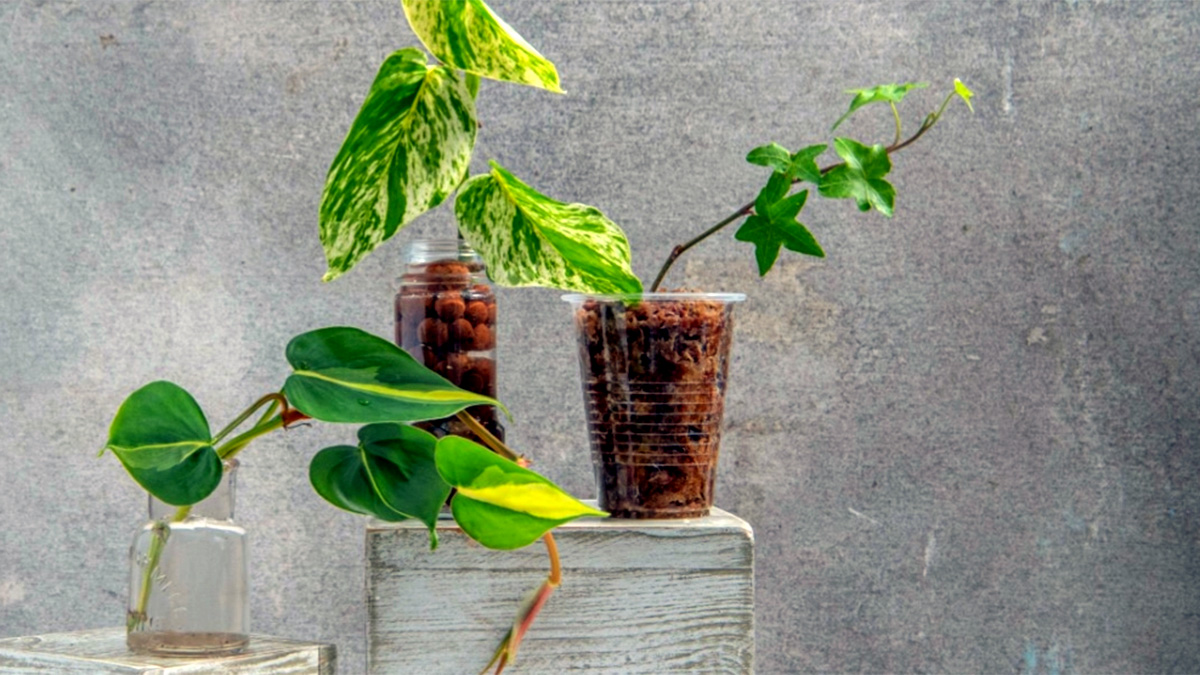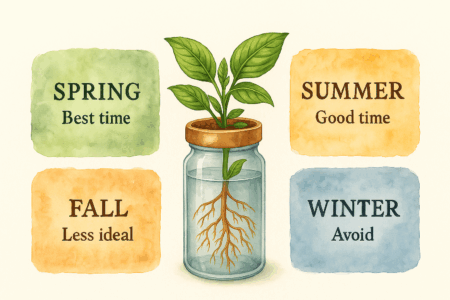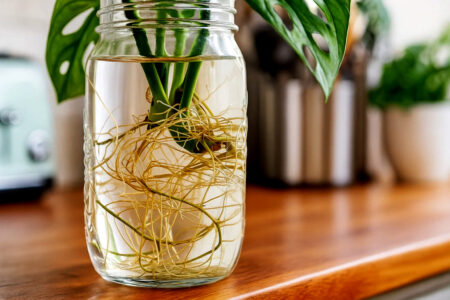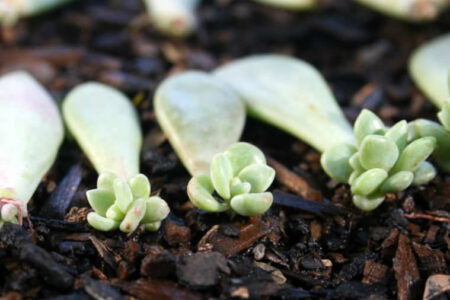Easy Propagation Techniques for Common Houseplants

Propagating houseplants is a simple and satisfying way to expand your indoor garden. With just a few cuttings and the right conditions, you can grow new plants from the ones you already have. Whether you’re a beginner or a long-time plant enthusiast, learning how to propagate will make your collection thrive without extra cost.
Why propagation is worth learning
Propagation is one of the most rewarding parts of plant care. It allows you to multiply your collection without spending more money at the nursery. Beyond saving costs, it is also an easy way to share plants with friends and bring more greenery into your home.
Understanding plant propagation
Propagation is simply the process of creating new plants from an existing one. It can happen through several methods including stem cuttings, leaf cuttings, division, or layering. Each method mimics how plants naturally reproduce, giving you more confidence as you learn which works best for each species.
Best times to propagate houseplants

Spring and early summer are the most successful times to propagate because plants are actively growing. Warmer temperatures and longer daylight hours encourage strong root development. Avoid propagating in winter, as plants often slow their growth and may take longer to root.
Tools and materials you’ll need
Before you start, gather clean scissors or pruning shears to make precise cuts. Have small pots or jars ready, depending on whether you plan to root cuttings in water or soil. You may also need rooting hormone, potting mix, and plant labels to keep track of each cutting.
Easy propagation techniques to try
These simple methods will help you create new plants from the ones you already enjoy.
Water propagation

Water propagation is one of the simplest ways to get started. Take a healthy cutting just below a leaf node and place it in a clear jar of room-temperature water. Change the water every few days and keep the jar in bright, indirect light until roots form.
Certain plants such as pothos, philodendron, and monstera root quickly using this method. Once the roots are about two inches long, transfer the cutting into soil. Keep the soil slightly moist for the first few weeks to help the plant adjust.
Soil propagation
Some plants prefer to root directly in soil rather than water. Dip the cut end of your stem or leaf into rooting hormone and insert it into a moist, well-draining potting mix. Cover the pot loosely with a plastic bag to hold humidity and check regularly for root growth.
Plants like peperomia, jade plants, and coleus respond well to this method. Avoid letting the soil dry out completely, but make sure it is not waterlogged. When new leaves appear, it is a sign your cutting has taken root.
Leaf propagation

Leaf propagation works best for succulents and snake plants. Gently remove a healthy leaf and let it dry for a day or two to prevent rot. Place it on top of slightly moist soil or insert the cut edge just below the surface.
Keep the pot in bright, indirect light and resist the urge to water too often. Within a few weeks, small roots and baby plants will start to form. Once they are strong enough, transplant them into their own pots.
Division
Division is ideal for houseplants that grow in clumps such as peace lilies, ferns, or spider plants. Carefully remove the plant from its pot and separate the root ball into smaller sections using your hands or a clean knife. Each division should have a healthy portion of roots and foliage.
Replant each section into its own container with fresh potting mix. Water them well and keep them in a shaded area for a few days to reduce stress. As they settle, move them back to a bright location and resume normal care.
Caring for new cuttings
New cuttings need gentle care while they develop roots. Place them in a warm, bright location out of direct sunlight. Maintain consistent moisture and humidity but avoid overwatering, which can cause root rot.
Once roots are well established, start feeding with a diluted liquid fertilizer every few weeks. Gradually move the plants into more light to encourage stronger growth. Transplant them into larger pots when they outgrow their starter containers.
Common mistakes to avoid
One of the most common mistakes is using unclean tools that can introduce disease. Always sterilize scissors or knives before taking cuttings. Avoid cutting from unhealthy or weak plants, as they may not produce viable offspring.
Another error is giving up too soon. Some plants root quickly, while others can take several weeks to show signs of growth. Be patient and keep your setup consistent for the best results.
Easy houseplants to start with
If you are new to propagation, start with forgiving plants that root easily. Pothos, spider plants, and philodendrons are excellent beginner choices. Snake plants, peace lilies, and many succulents also respond well and require minimal effort.
These plants not only propagate easily but also adapt quickly to new pots and conditions. Once you have success with these varieties, you can move on to more challenging species.
Tips for sharing and displaying new plants
Propagated plants make thoughtful and affordable gifts. You can place rooted cuttings in decorative jars or small clay pots for a personal touch. Label them with care instructions and tie on a simple tag or ribbon.
For your own home, use propagated plants to fill empty corners or shelves. Mix them into group displays for a lush indoor garden look. Over time, you will have a thriving collection grown entirely from your own efforts.
Conclusion
Propagation brings a deeper connection to your plants and adds life to every corner of your home. With patience and the right approach, anyone can turn one plant into many. Once you master these easy techniques, you’ll always have something green growing and ready to share.
